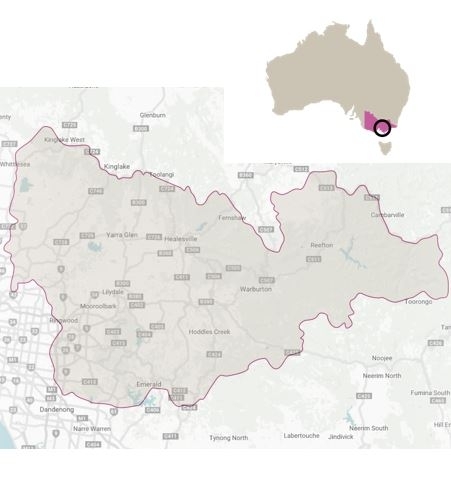There are no products listed under this category.

"The Yarra Valley was Victoria's first wine growing district with a history stretching back 170 years and is known as the birthplace of Victoria's wine industry. Vines were first planted in 1838 and viticulture spread rapidly through the 1860s and 1870s. However, increased demand for fortified wine saw Yarra Valley wine production cease in 1921. Replanting began in the late 1960s with pioneers like Dr Bailey Carrodus, Dr John Middleton and Guill de Pury laying the foundations that have led to the Yarra Valley being recognised as one of Australia's foremost cool climate regions, capable of making classic styles from a wide range of varieties...
The Yarra Valley is one of Australia's coolest regions with elevation varying from 50 metres to 400 metres. Rainfall is winter/spring dominant, with the summer relatively cool, dry and humid. The traditional grape growing areas on the northern side of the valley are grey to grey-brown in colour on the surface and range from loamy sand to clay loam in consistency with red-brown clay subsoils, frequently impregnated with rock. The other major soil type is the immensely deep and fertile red volcanic soil to be found at Seville, Hoddles Creek and elsewhere on the southern (Warburton) side of the valley. The variation in altitude and soil types in this hilly region creates differences in climates and exposure which allows several varieties to excel.
The modern classic Yarra Valley varieties like Chardonnay, Pinot Noir, Cabernet Sauvignon and Shiraz have been joined in recent years by a selection of emerging varieties. Nebbiolo, Arneis, Gamay and Gruner Veltliner are all showing great promise. Running parallel to the emergence of these new varieties has been the emergence of a new breed of bold and exciting winemakers, challenging the status quo and pushing the boundaries of what is possible in the Yarra Valley. All of this makes for a very exciting future for one of Australia’s most historic wine regions." - Wine Australia
Map courtesy: Wine Australia
There are no products listed under this category.